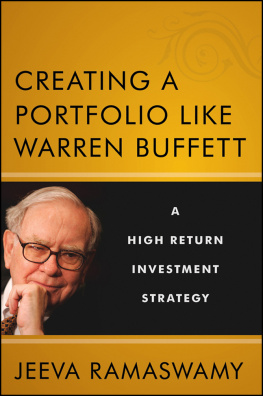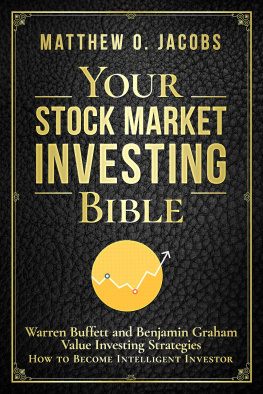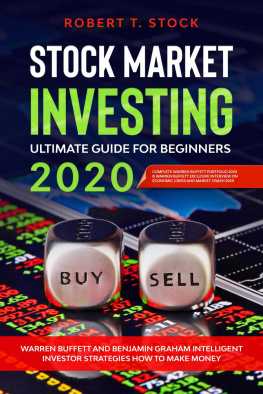Copyright 2012 by Jeeva Ramaswamy. All rights reserved.
Published by John Wiley & Sons, Inc., Hoboken, New Jersey.
Published simultaneously in Canada.
No part of this publication may be reproduced, stored in a retrieval system, or transmitted in any form or by any means, electronic, mechanical, photocopying, recording, scanning, or otherwise, except as permitted under Section 107 or 108 of the 1976 United States Copyright Act, without either the prior written permission of the Publisher, or authorization through payment of the appropriate per-copy fee to the Copyright Clearance Center, Inc., 222 Rosewood Drive, Danvers, MA 01923, (978) 750-8400, fax (978) 646-8600, or on the Web at www.copyright.com. Requests to the Publisher for permission should be addressed to the Permissions Department, John Wiley & Sons, Inc., 111 River Street, Hoboken, NJ 07030, (201) 748-6011, fax (201) 748-6008, or online at http://www.wiley.com/go/permissions.
Limit of Liability/Disclaimer of Warranty: While the publisher and author have used their best efforts in preparing this book, they make no representations or warranties with respect to the accuracy or completeness of the contents of this book and specifically disclaim any implied warranties of merchantability or fitness for a particular purpose. No warranty may be created or extended by sales representatives or written sales materials. The advice and strategies contained herein may not be suitable for your situation. You should consult with a professional where appropriate. Neither the publisher nor author shall be liable for any loss of profit or any other commercial damages, including but not limited to special, incidental, consequential, or other damages.
For general information on our other products and services or for technical support, please contact our Customer Care Department within the United States at (800) 762-2974, outside the United States at (317) 572-3993, or fax (317) 572-4002.
Wiley also publishes its books in a variety of electronic formats. Some content that appears in print may not be available in electronic books. For more information about Wiley products, visit our web site at www.wiley.com.
Library of Congress Cataloging-in-Publication Data
Ramaswamy, Jeeva, 1972
Creating a portfolio like Warren Buffett : a high return investment strategy / Jeeva Ramaswamy.
pages cm
Includes index.
ISBN 978-1-118-18252-9 (cloth); ISBN 978-1-118-22742-8 (ebk);
ISBN 978-1-118-24036-6 (ebk); ISBN 978-1-118-26501-7 (ebk)
1. Investments. 2. Portfolio management. 3. Buffett, Warren. I. Title.
HG4521.R276 2012
332.6dc23
2011045521
To my mentors:
Warren Buffett and Peter Lynch
Acknowledgments
I get numerous e-mails and phone calls asking How was the GJ investment fund able to beat the best market index with a wide margin from its inception? and What is the secret behind stock market success? I wrote this book to answer those questions, and more. By simply applying well-known Warren Buffett investment techniques I have learned how to pick stocks and manage a portfolio. All of my ideas are learned from Warren Buffetts teachings.
When I became interested in investing, I was interested in learning from the masters. I started reading Warren Buffetts partnership letters and Berkshire Hathaways annual reports to uncover investment principles. After reading most of the books written about Warren Buffett, I reverse engineered his initial investment decision and learned about investing and practiced thoroughly. That knowledge gave me great returns, and that confidence led me to start investment funds similar to his partnership. Over the last two years I have been able to beat market indexes by the largest of margins and I performed in the top 5 percent of the hedge fund and mutual fund universe. Whenever I make a buy-and-sell decision, I try to think about what Warren Buffett would do and try to use his previous investment decisions as reference points.
I have to thank, specifically, Warren Buffett and his gracious teaching mentality and willingness to spread great investment principles to the investment community through annual reports, TV appearances, interviews, and annual meetings. He has truly given other investors a lot to write about and expand upon. Apart from being a great investor, he is also a great human being in terms of philanthropy and living a simple lifestyle. That makes him my mentor and hero.
Next I would like to thank Peter Lynch and his investment books, for he elaborated thoroughly on his investment experience and his research methods, and that was very useful for me.
I would like to thank John Wiley & Sons Inc. team members Debra Englander (Editorial Director), Kimberly Bernard (Development Editor), and Tula Batanchiev (Editorial Assistant).
I would like to thank my freelance book editor, Bill M. West.
I would like to thank my mom and dad, who taught me the necessity of working hard for success.
I would like to thank my wife, Girija Jothi Arumugam, for supporting all my endeavors. I am still amazed by her financial acumen, the way she handles the home finances, and her clear thinking about planning the future. My life totally changed when I held my baby Harshini. She calls Warren Buffett a Thatha, which means Grandpa in Tamil. She was able to pronounce Peter Lynchs name correctly and identify stock charts correctly at the age of 18 months. It makes me happy to realize that she will one day read this book and learn successful stock market investment techniques.
PART I: WARREN BUFFETT INVESTMENT PRINCIPLES
Before you start investing in the stock market, you should have a clear understanding of investment principles so that you can profit from the stock markets cycles. A simple investing principle is Buy low and sell high, but most of the investing public does the opposite.
When good news about a particular company appears in the press, the stock goes up. When that happens, people get greedy and buy at the high price thinking that stock will keep going up, and they can profit by selling at an even higher price than they already paid. After a couple of weeks or months, some bad news comes out about the particular company or a bad economic report or political event happens, and the stock starts coming down in price. When the price goes to less than the price they paid, stockholders get fearful and want to limit their loss or protect their capital and sell at a loss. Unfortunately after they sold, the stock starts to come up in price. Now they are kicking themselves, feeling that they sold too early.
So how do you behave in this market environment? How do you profit from this kind of market behavior? The answer is that you should have a clear understanding of investment principles. The following chapters explain investing principles written by Ben Graham and practiced and improved upon by Warren Buffett. Warren Buffett experienced many boom and bust cycles in his investing career. Those basic principles are guided him during those market cycles and made him one of the greatest stock market investors in the world. Let the journey begin.
Key Points
- Investors should have sound investing principles, patience, and confidence in their own research and belief in themselves.
- Stock investing is part ownership in the company. A business-like investing approach will help you to make intelligent buying and selling decisions.
- Long-term investing includes buying stock at attractive prices, which are less than the intrinsic value of the business, and holding that stock as long as the companys fundamentals are improving.








